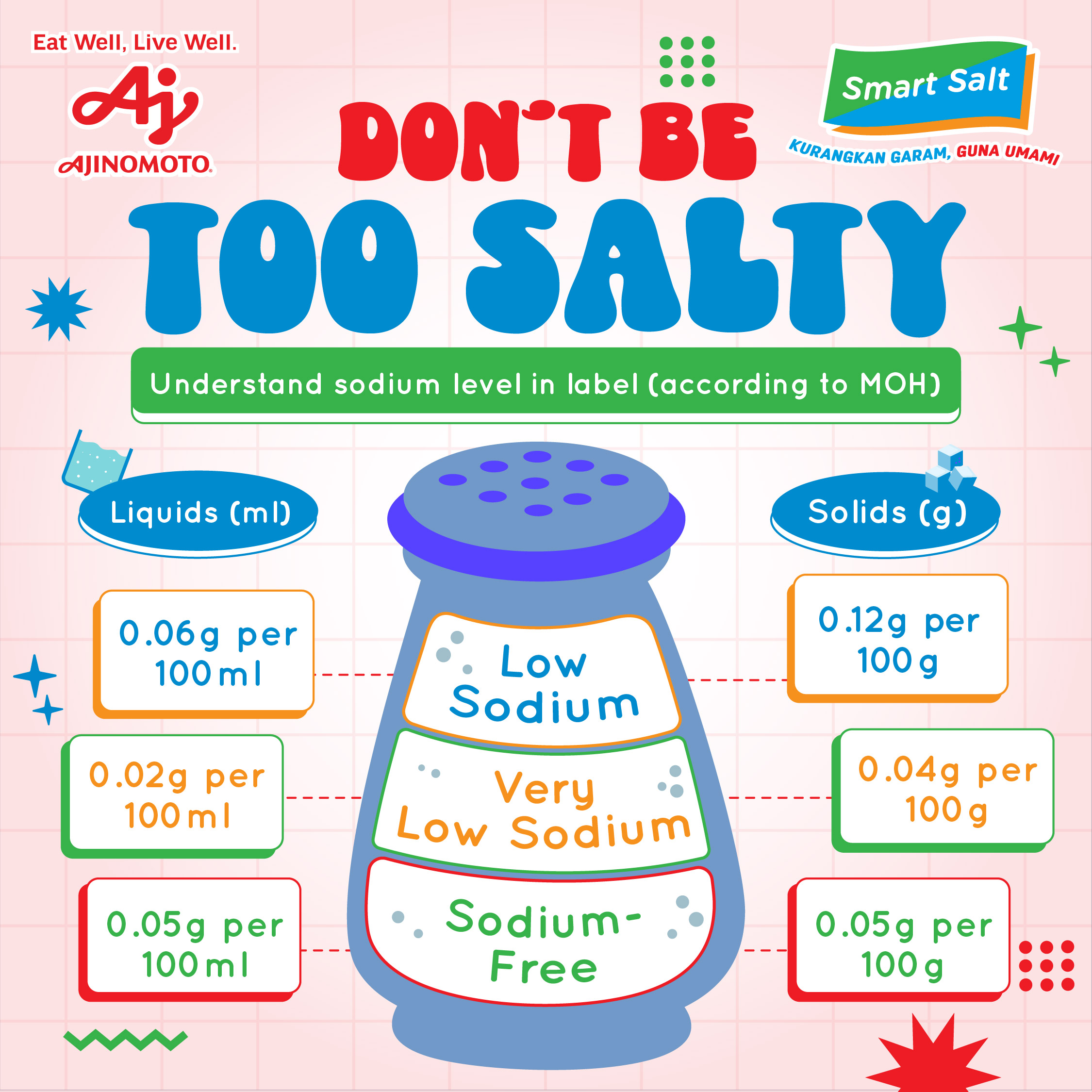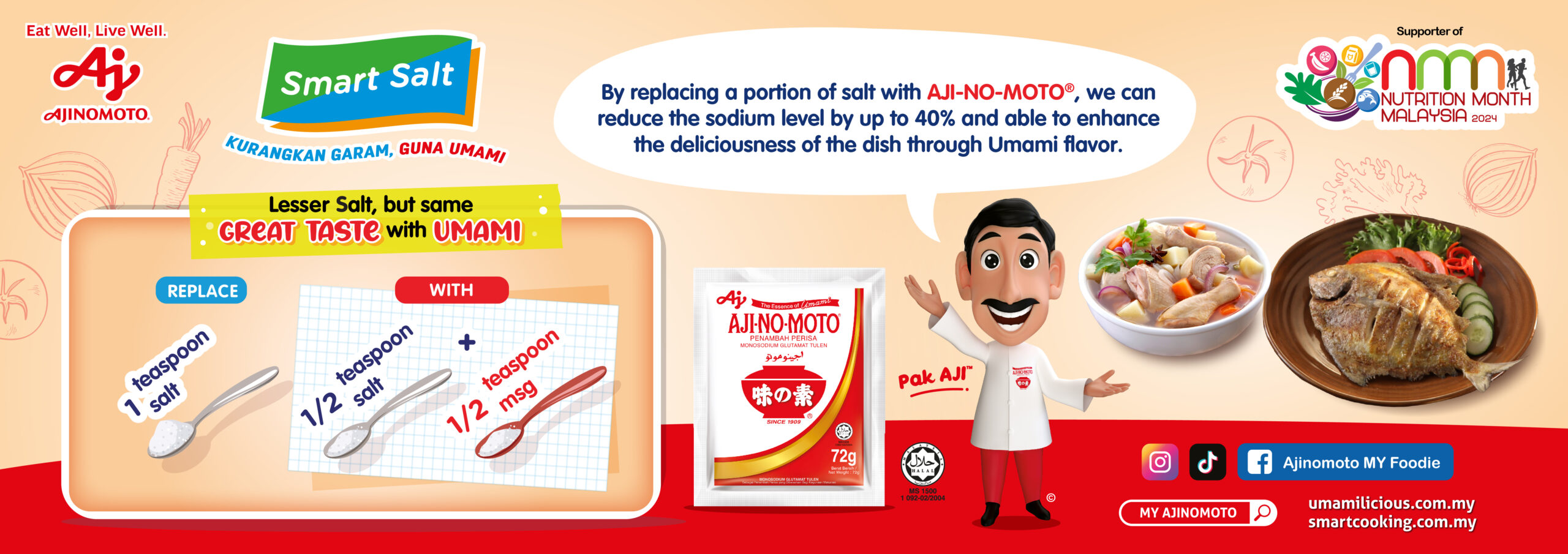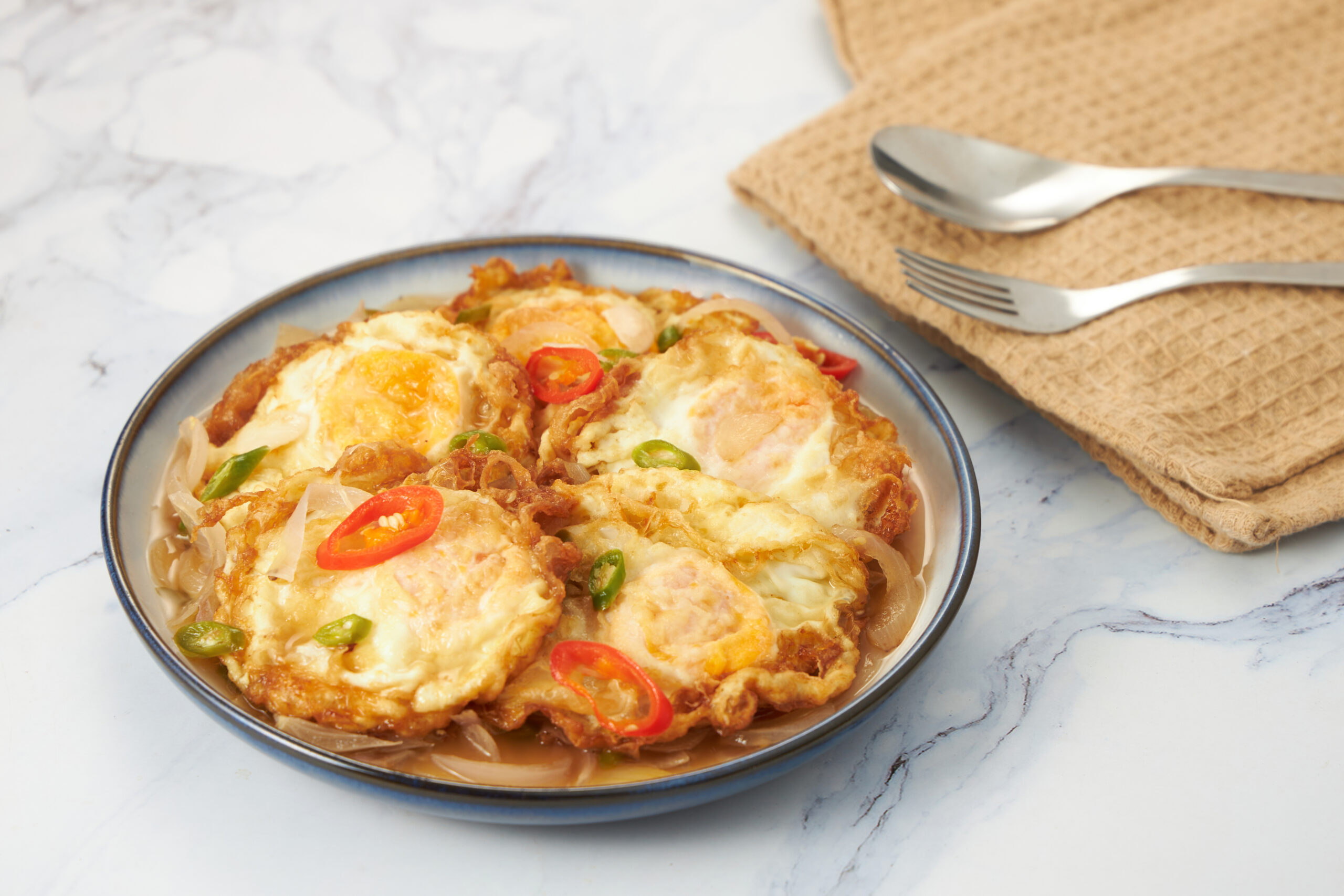
5 Easy Tricks To Reduce Sodium Without Sacrificing Flavour
Reducing sodium intake is crucial for maintaining optimal health. High sodium consumption is linked to various health issues such as hypertension, heart disease, and stroke. However, many people believe that a low-sodium diet means sacrificing flavour. The good news is that with the right strategies and ingredients, you can enjoy delicious, flavourful meals while cutting down on sodium. Here are some practical tips to help you transition to a low-sodium diet without compromising on taste.
1. Gradual Reduction Strategy
One effective way to reduce sodium intake is to gradually reduce the amount of salt used in your cooking and at the table. Sudden changes can be difficult to stick with, but by slowly decreasing the salt, you allow your taste buds time to adjust. So, you can start with something simple such as limiting fast food intake per week, then gradually increase the weekly limit for you to get used to the new eating habit. Over time, you’ll find that you can enjoy the natural flavours of food without the need for added salt.
2. Use Fresh and Whole Ingredients
Choosing fresh, whole foods over processed items can significantly reduce sodium intake. Processed foods often contain high levels of sodium to enhance flavour and preserve shelf life. On the other hand, fresh ingredients come with natural flavours that reduce the need for additional salt. By focusing on whole foods like fruits, vegetables, lean proteins, and whole grains, you can create flavourful meals that are lower in sodium.
3. Incorporate Aromatics
Aromatics such as garlic, onions, and shallots are powerful tools for building a flavourful base in your dishes. Sautéing or roasting these ingredients can bring out their natural sweetness and deepen their flavours. Adding a variety of aromatics to your cooking can enhance the overall taste of your meals without relying on salt wholely to flavour your dishes.
4. Be Mindful of Hidden Sodium
Hidden sodium in packaged foods and restaurant meals can sabotage your efforts to reduce salt intake. It’s important to read food labels carefully and be aware of the sodium content in your groceries. When dining out, don’t hesitate to ask about the sodium levels in dishes and request for less salt to be used in preparation. Being mindful of hidden sodium sources will help you maintain a low-sodium diet more effectively.
Here’s how you can understand the terms on food labels:
“Low Sodium”
– 0.12 g per 100 g (solids)
– 0.06 g per 100 ml (liquids)
“Very Low Sodium”
– 0.04 g per 100 g (solids)
– 0.02 g per 100 ml (liquids)
“Sodium-Free”
– 0.05 g per 100 g (solids)
– 0.05 g per 100 ml (liquids)

5. Make Use of Umami

Umami, often referred to as the fifth taste, is a savoury flavour that can add depth to your dishes. Foods rich in umami, such as mushrooms, tomatoes, and Parmesan cheese, can provide a satisfying taste that makes up for the reduced salt. Incorporating umami-rich ingredients can help create delicious, satisfying meals with less sodium.
For an easier way to add umami, consider implementing the Smart Salt Concept! Just by replacing a portion of salt with AJI-NO-MOTO®, you can reduce sodium in dishes by up to 40%! Plus, AJI-NO-MOTO® is a seasoning that enhances the savoury flavour of your food; so, you won’t even notice that a dish is reduced sodium with the enhanced taste of umami!
Transitioning to a low-sodium diet is achievable without sacrificing flavour. By gradually reducing salt, using fresh and whole ingredients, incorporating aromatics, and leveraging the savoury taste of umami, you can enjoy delicious meals while cutting down on sodium. Remember to be mindful of hidden sodium in packaged and restaurant foods. Experiment with new ingredients and cooking methods to discover flavours that satisfy your palate.


Check out these less-sodium recipes!
The long-term health benefits of reducing sodium intake, such as lower blood pressure and reduced risk of heart disease, are well worth the effort. Enjoy the journey to healthier, flavourful eating!
5 Easy Tricks To Reduce Sodium Without Sacrificing Flavour



